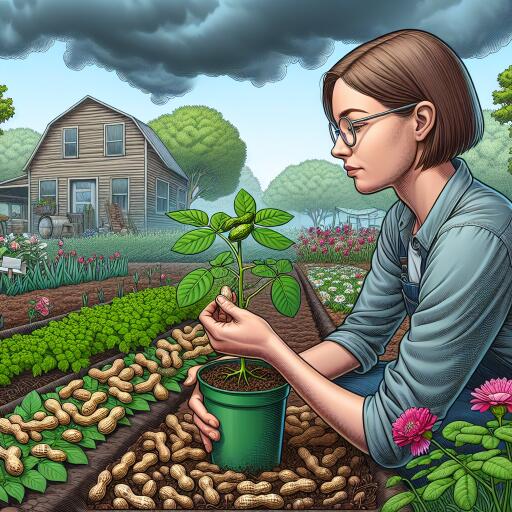
You Don’t Have to Live in the Tropics to Grow Peanuts
Imagine lounging in your garden, encircled by a bounty of flowering plants, and among them, surprisingly, peanuts. This scenario might seem far-fetched if you associate peanut cultivation with the warm, sun-drenched fields of the tropics or the Southern United States. However, it’s entirely possible to cultivate these delightful legumes far beyond their traditional growing belts.
[INSERT_PREVIOUS_SECTION_HERE]
Peanuts, also known as groundnuts, have their cultivation epicenters in regions renowned for their warm climates. Countries such as China, India, Nigeria, and parts of the southern United States lead in production. These areas are primarily located within or akin to USDA hardiness zones 8-11, characterized by their extended summer durations. Such conditions are vital, providing the up to 150 days of warmth peanuts require from planting to harvest.
Yet, what if your residence lies outside these balmy zones? The thought of growing peanuts might seem like a horticultural daydream. But, with a little ingenuity and understanding of peanuts’ growth requirements, gardeners in cooler climates can join in the pleasure of harvesting their own peanuts. It’s a pursuit that defies traditional agricultural boundaries, offering a fresh perspective on what can be grown where.
At the heart of successful peanut cultivation is understanding their lifecycle and environmental needs. Peanuts are fascinating plants, part of the legume family, which means they have the unique ability to fix nitrogen in the soil — an attribute that benefits not only the peanut plants themselves but also enriches the soil for future crops. This characteristic, coupled with a strategic approach to their growing season, allows gardeners in cooler climates to explore peanut cultivation.
The key strategy involves selecting the right peanut variety and employing season-extending gardening techniques. Short-season varieties, for example, can mature within the constrained warmth window of cooler regions. Such varieties are specifically bred to reach maturity quicker, making them an ideal choice for gardeners not blessed with the lengthy, sun-soaked days characteristic of traditional peanut-growing regions.
Furthermore, leveraging tools like raised beds, which warm up quicker than ground soil, and utilizing cloches or row covers to protect the young plants from cool spring and fall temperatures, can create a microclimate more suited to peanut growth. These practices help bridge the gap between the ideal peanut-growing conditions and what’s available in cooler regions, broadening the geographical scope where peanuts can thrive.
The joy of harvesting peanuts doesn’t exclusively belong to those living in the warmest climates. With a blend of the right peanut variety, a bit of gardening savvy, and an adventurous spirit, gardeners from a wider array of climates can indulge in the unique experience of growing peanuts. This opens up a world of agricultural possibilities, challenging the conventional wisdom about where and what we can grow.
Thus, the cultivation of peanuts illustrates a broader lesson in gardening and agriculture: With knowledge, creativity, and a willingness to experiment, the limits of what can be planted and successfully grown are far broader than traditional zones and climates suggest. Gardeners across various regions can enjoy the process of growing peanuts, making the practice a testament to the adaptability of both plants and people.
Embracing the potential to grow peanuts outside their typical environments is more than a gardening novelty—it’s an exploration of resilience and sustainability. By expanding the cultivation of diverse crops into new areas, we contribute to a more varied and adaptable food system. So, whether you find yourself in a cooler northern climate or simply wish to challenge conventional agricultural norms, growing peanuts could be a rewarding addition to your gardening endeavors.
As you consider your next garden project, remember that even the humble peanut, often associated with warm, southern lands, has a place in gardens far and wide. It stands as a symbol of the surprises and rewards that await those willing to explore the boundaries of cultivation. So, why not let this be the year you introduce peanuts into your gardening repertoire? The results may be surprisingly delightful.





Leave a Reply